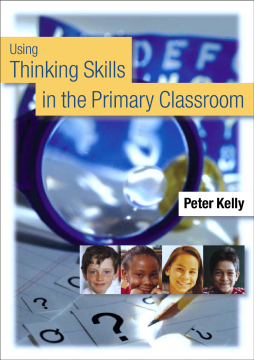
Additional Information
Book Details
Abstract
Most children already display a range of thinking skills when they communicate with each another and when they talk about their interests (whether those are soap operas or car engines). This thought-provoking book presents an approach for classroom practice that will encourage teachers, teaching assistants, and gifted and talented co-ordinators to build on the often quite sophisticated thinking skills the children in their class already have. The author highlights points for good pratice, suggests some lesson ideas, builds in opportunities for professional reflection, and gives advice on: } classroom organization. } approaches to collaborative groupwork. } developing children's (and teachers') speaking and listening skills. } building on the thinking skills that children of all abilities display. } using questioning techniques to promote thinking skills in the classroom. } whole-school issues. Each chapter ends with a summary of key points and there is some photocopiable material included.
Table of Contents
| Section Title | Page | Action | Price |
|---|---|---|---|
| 1. Why use confined masonry? | |||
| 2. General rules for building with confined masonry | |||
| 3. Confined masonry step by step | |||
| 4. Foundation | |||
| 5. Vertical and horizontal tie reinforcements | |||
| 6. Walls | |||
| 7. Completing the vertical ties | |||
| 8. Reinforcement of openings | |||
| 9. Ring-beams (tie-beams, horizontal ties) | |||
| 10. Free-spanning beams | |||
| 11. Slabs | |||
| 12. Stairs | |||
| 13. House extensions | |||
| 14. The shop window problem | |||
| 15. Retaining walls in stone masonry | |||
| 16. Pitched lightweight roofs | |||
| 17. Quality Assurance |
